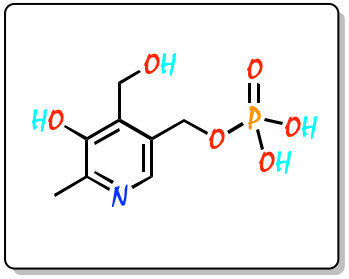Written by J.A Dobado | Last Updated on April 22, 2024
What is vitamin B6?
Vitamin B6, called pyridoxine (because of its structural similarity to pyridine), is actually a group of three chemical compounds called pyridoxine (PN) (or pyridoxol), pyridoxal (PL) and pyridoxamine (PM). They are part of the family of water-soluble B vitamins.
The systematic name of the IUPAC for pyridoxine is 4,5-bis(hydroxymethyl)-2-methylpyridin-3-ol, for pyridoxal is 3-hydroxy-5-(hydroxymethyl)-2-methylpyridine-4-carbaldehyde, and for pyridoxamine is 4-(aminomethyl)-5-(hydroxymethyl)-2-methylpyridin-3-ol.
In the 1930s, Rudolf Peters demonstrated that young rats with a semi-synthetic diet of added thiamine and riboflavin but no other vitamin supplement developed a disease with severe skin lesions. In 1934, Paul György discovered that a substance could cure this disease (acrodynia dermatitis) and named it vitamin B6. In 1938, Samuel Lepkovsky isolated and crystallized vitamin B6 from rice bran. The following year, Leslie Harris and Karl Folkers, and Richard Kuhn et al. independently determined that vitamin B6 was a pyrimidine derivative. Thus, György proposed the term pyridoxine for this derivative. Finally, in 1945, Esmond Snell was able to determine the other two forms of vitamin B6: pyridoxal and pyridoxamine.
Further studies showed the ability of the organism to convert them into the enzymatically active form pyridoxal-5-phosphate. Pyridoxal-5-phosphate plays a role in a wide variety of enzyme systems, especially in the metabolic utilization and transformation of amino acids.
Chemical structure
All vitamin B6 vitamers share a common 3-hydroxy-2-methylpyridine structure. Pyridoxine (PN) has two -CH2OH groups in positions 3 and 4. Pyridoxal (PL) has an aldehyde in position 4 and -CH2OH in position 3.
 |
| 3D Structure |
 |
| 3D Structure |
 |
| 3D Structure |
In addition, three other vitamin B6 vitamers correspond to the 5-position phosphorylated derivatives of: pyridoxine, pyridoxine 5-phosphate (P5P); pyridoxal, pyridoxal 5-phosphate (PLP); and pyridoxamine, pyridoxamine 5-phosphate (PMP), which have coenzyme functions, the latter two PLP and PMP being the most active forms.
 |
| 3D Structure |
 |
| 3D Structure |
 |
| 3D Structure |
Functions
Their main functions in the body are related to metabolism (helping to release energy from food). In addition, they help in the proper functioning of more than sixty enzymes, promote a healthy immune system, as well as in cell multiplication and in the manufacture of DNA and RNA (genetic material). Large concentrations of pyridoxine are found in the brain, which has led to its use in the treatment of depression. Vitamin B6 helps maintain brain function, in the formation of red blood cells and is essential for the metabolism and absorption of proteins. It also helps with the synthesis of antibodies in the immune system.
Food sources
Meats, fish, nuts, legumes, bananas, brown rice, avocados, whole grains, lentils, corn, eggs, fortified cereals, spinach, potatoes, soybeans, liver, kidneys, poultry, oatmeal and prunes.